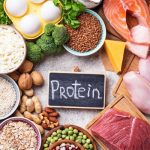Question: I am looking for a pastry recipe made with oil and some information on hydrogenated oils. Can you help?
Answer: Let’s start with a few definitions as a way of understanding the fats in our food.
Hydrogenation is a process used in the production of some margarine, shortening, and other food products. This process involves adding hydrogen to liquid oil to make it spreadable at room temperature. In other words, it hardens the oil. The harder the vegetable product, the more hydrated it is. Most brands of soft margarine have been partially hydrogenated. An exception is Becel, which has not been hydrogenated but has palm oil, a saturated fatty acid, added. According to recent medical findings, hydrogenation produces a type of fat called trans fatty acid. A soft tub variety margarine with liquid vegetable oil listed on the label as the first ingredient, will have the least amount of trans fatty acids.
Fatty acids are the basic building blocks of fats, just as amino acids are the building blocks of protein. Each type of fat is a mixture of different fatty acids.
Types of fatty acids
- Saturated
- Monounsaturated
- Polyunsaturated
- Trans
Saturated fatty acids
- Found chiefly in animal sources
- Two vegetable oils, coconut and palm oil, are also highly saturated
- Solid at room temperature
- Studies show an association between increased intake of saturated fatty acids and increased LDL (bad) cholesterol
Monounsaturated fatty acids
- Found mainly in vegetable oils such as canola, olive and peanut oils
- Liquid at room temperature
- Studies indicate that monounsaturated may lower LDL (bad) cholesterol levels
Polyunsaturated fatty acids
- Found mainly in vegetable oils
- Liquid at room temperature
- Studies indicate that polyunsaturated fatty acids have been associated with lowering LDL (bad) cholesterol
Trans fatty acids
- Occur naturally in some animal products, such as butter and milk
- In hydrogenated products
- Research suggests hydrogenated products may have similar effects as saturated fatty acids on raising LDL (bad) cholesterol levels and may also lower HDL (good) cholesterol.
If you are looking for ways to lower your blood cholesterol level, the majority of heart health experts and Health Canada recommend reducing total dietary fat, particularly saturated and trans-fatty acids.
Pastry using oil
The Canola Information Service developed the following recipe. You may prefer to use canola oil instead of olive oil as it is bland in taste and will not give the pastry the distinctive olive oil flavor. However if you like the olive oil flavor, it can be used, as can other oils. A comparison of oils shows canola oil to have the lowest saturated fat at 7 % and olive oil is 15 %.
For more information on oils contact www.canolainfo.org
Canola Oil Pastry
| 1 3/4 cups | all-purpose flour | 425 mL |
| 1 tsp | salt | 5 mL |
| 1.2 cup | canola oil | 125 mL |
| 3 – 4 tbsp | ice water | 45 – 60 mL |
Measure flour and salt into bowl. Add canola oil. Mix together until particles are the size of small peas. Sprinkle with water, one tablespoon (15 mL) at a time, mixing until flour is moistened and dough almost lifts from the side of the bowl. If dough seems dry, add more oil, not water. Form into two balls and roll each to fit pan.
Oil pastry should be used immediately as it dries out quickly. If the pastry is not used immediately, wrap tightly and keep chilled. Yield: Two 9 inch (22 cm) shells.
Conversion Chart
When baking, the following chart can be used to convert recipes from solid fat to oil.
Solid fat Oil
1 cup (250 mL) = 13 1/2 tbsp (202.5 mL)
3/4 cup (187.5 mL) = 10 tbsp (150 mL)
1/2 cup (125 mL) = 7 tbsp (105 mL)
1/4 cup (62.5 mL) = 3 1/2 tbsp (52.5 mL)






